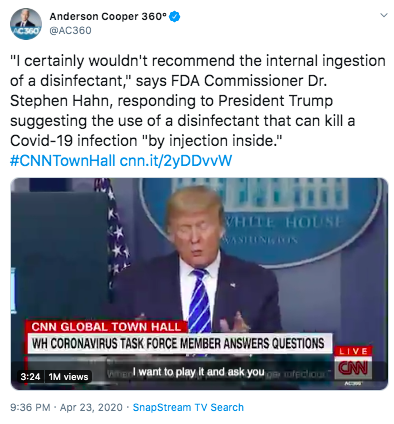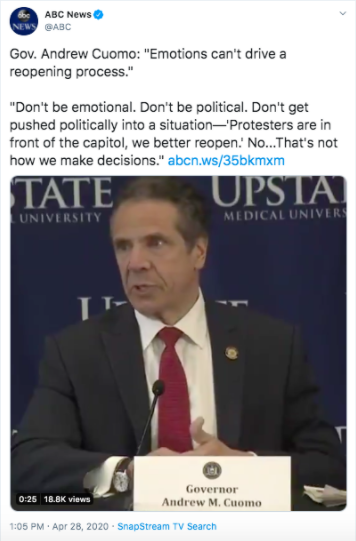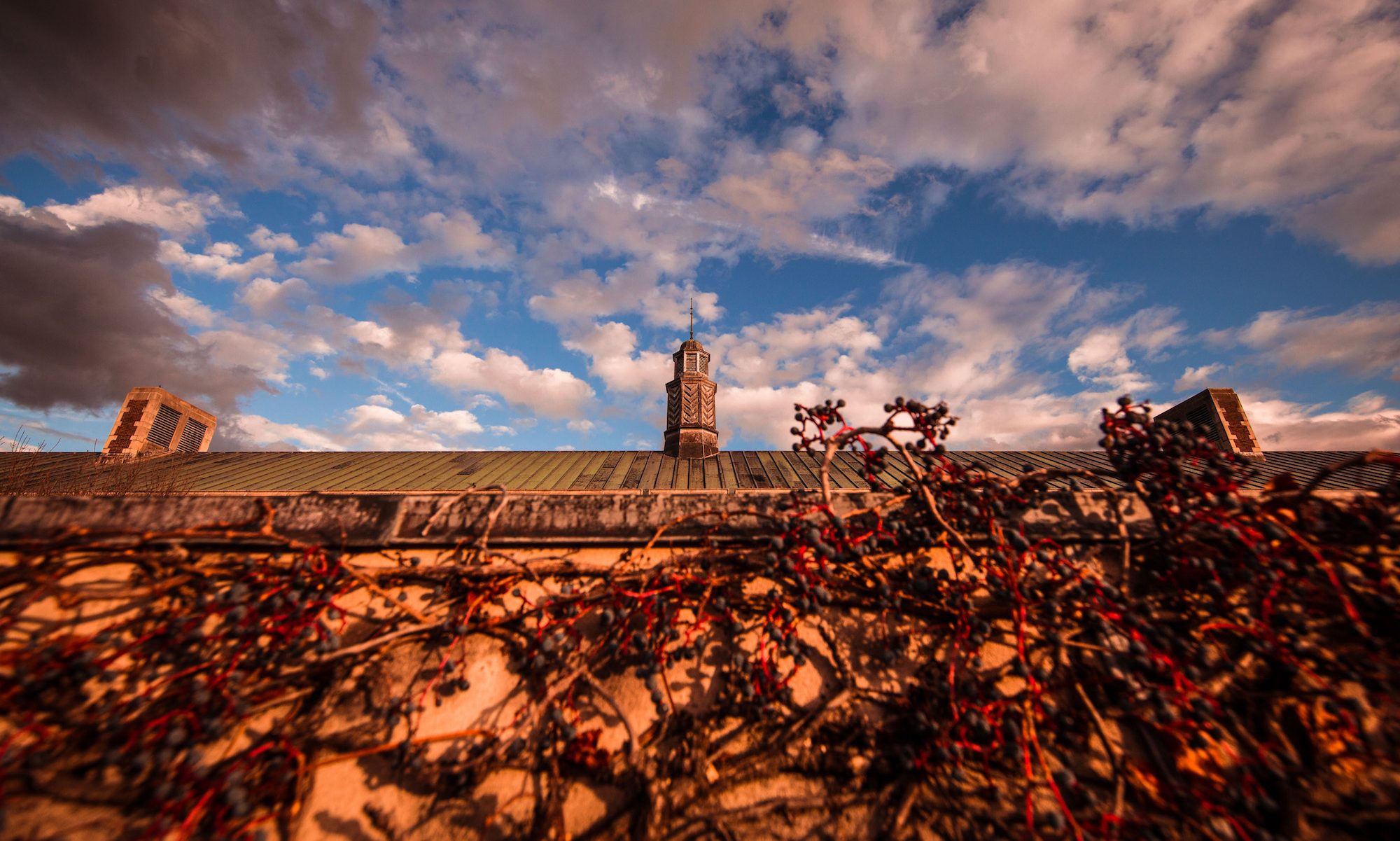The pandemic reveals the changing dynamic between citizens and the varying levels of government in which people are forming closer relationships with their state leadership. The weak leadership under the Trump administration has given way for governors to fill this power void and guide the country through this crisis.
The politics of the pandemic
In her book This Changes Everything: Capitalism v. The Climate, Naomi Klein describes the United States’ history with natural disasters and their related relief programs. She uses Hurricane Katrina as an example of the U.S. doing “better at responding to problems as they happen rather than investing in the prevention of these problems” (Klein 106). This approach to major crises, particularly those pertaining to the environment, is ultimately more costly than initial preventative programs and has long-term implications for the affected regions. In the case of the coronavirus, the Trump administration seems to be struggling with their response, made evident by the prioritization of politics and the economy over human health.
We are witnessing the interesting situation created by a pandemic during a presidential election year. Charles Blow from the New York Times argues that Trump is framing the pandemic as a war rather than what it actually is – a health crisis. There is some truth in this statement. In a traditional war there is an “other,” but it is difficult to pinpoint an enemy in a global pandemic. Trump has tried his hardest though to find someone to blame. The Washington Post identifies those enemies as:
- China (hence the “Chinese virus”) for not slowing the spread fast enough
- Obama and the Democrats for implementing policies that now prevent the rollout of COVID-19 testing kits
- The media for portraying his response in a negative light
Each of these “enemies” acts as a rallying point for his support base as presidential primaries are rescheduled for later in the summer and closer to the November election due to the coronavirus.
Governors, not the president, are flattening the curve
Archon Fung wrote in POLITICO that states and localities have become the “centers of justice, solidarity, far-sighted democratic problem-solving.” State and local leaders are the ones promoting social distancing and enforcing policies to flatten the curve. For example, Andrew Cuomo is being revered for his leadership through this crisis not just in New York but around the country. New York was one of the states to get hit the hardest and the fastest by the virus with over 300,000 cases and 20,000+ deaths to date. However, while other states are still preparing to hit their peaks, NYS cases are on the decline.
If you are a New York resident then you have probably been paying more attention to the governor’s daily press briefings than those held by the president. This is largely because the virus has forced people to turn to state leadership for daily updates regarding lockdowns, testing sites and essential businesses.

So, using New York as a case study, why can governors be credited with flattening the curve? It is because people are watching their news briefings and they are providing the leadership and information that those people need to get by on a day-to-day basis. Unlike the President who needs to be fact checked after each press conference or has accused governors of overstating the urgent need for medical supplies.
Let’s not be naive – there are politics at play at the state level, too
Political sustainability implies the fulfillment of current political goals and resource needs without compromising those of future generations while general sustainable development typically advocates for the overall reduction of politics in decision-making. At a first glance, this seems to create an ‘either or, not both’ situation. However, through the lens of the pandemic, Gov. Andrew Cuomo (D-NY) has somehow managed to achieve both of these scenarios.
Politics have been absent from the discussion surrounding Cuomo’s pandemic policies as people have focused on his calm and competent approach to the situation compared to Trump. In fact, my Facebook timeline has been littered with posts from my Republican family members applauding the governor for serving as a beacon of hope through this crisis. But, as cynical as it sounds, hope can also serve as a powerful political tool.

Cuomo has created an interesting situation where he has seemingly removed politics from his COVID-19 policies while simultaneously garnering support for a possible larger political agenda. #CuomoforPresident and #Cuomo2024 are two hashtags that have been trending on Twitter since the end of March. While it is not the place of an undergraduate student to make assumptions about another’s political ambitions, it is not unheard of for governors to seek a “promotion” (so to speak) to the White House, and Cuomo’s mild-mannered temperament could just get him there.
What does the pandemic mean for the future role of state governments?
The past six weeks have encouraged people to create a relationship and pay special attention to their governors. In her book, Klein (106) discussed inequality in relation to natural disasters stating, “the people who [are] already the most vulnerable [suffer] the most and longest.” State and local leaders have acknowledged the fact that people who do not have healthcare or earn minimum wage for “essential” jobs are put at the greatest risk to the virus. When this eventually passes, people are going to remember the role of their states in handling the pandemic in relation to the Trump administration’s response. Even if there are underlying political motivations as some suspect with Gov. Cuomo, the necessary steps needed to flatten the curve were still taken. Thus, it seems likely that Fung’s prediction of a “new civil federalism” could become a reality.
Lessons for climate change
It is clear that the pandemic is a product of the greater issue that is climate change. Globalization has sacrificed sanitation, nutrition and the environment for the sake of convenience and efficiency, and it has finally caught up to us. In fact, we have seen photos of the canals in Venice turn blue again and the smog over Los Angeles fade as people are forced to stay inside. Thinking back to Klein’s argument that the U.S. does a better job at managing disasters as they happen rather than preventing them, what type of precedent will COVID-19 set at the state and federal levels?
Unfortunately, because this country struggles with climate change denial and political polarization, it is likely that responses to future crises will vary between red and blue states. At the same time, however, the pandemic has started conversations about the Trump administration’s decisions to cut funding to the EPA and to dissolve the pandemic taskforce. It seems possible that there will be a push for these departments to be reinstated and, based on the success of state responses, to establish similar groups at the state level in preparation for future disasters.
Abby Sickles is a senior at SUNY Geneseo with a major in International Relations and a minor in Economics.
Sources:
“Coronavirus Will Change the World Permanently. Here’s How.” n.d. POLITICO. Accessed April 1, 2020. https://www.politico.com/news/magazine/2020/03/19/coronavirus-effect-economy-life-society-analysis-covid-135579.
Klein, Naomi. This Changes Everything: Capitalism vs. The Climate. New York: Simon & Schuster Paperbacks, 2014.
Blow, Charles. 2020. “The Politics of a Pandemic.” New York Times. March 29, 2020. https://www.nytimes.com/2020/03/29/opinion/coronavirus-pandemic-politics.html.
Phillips, Amber. “Everyone and everything Trump has blamed for his coronavirus response.” The Washington Post. March 31, 2020. https://www.washingtonpost.com/politics/2020/03/31/everyone-everything-trump-has-blamed-his-coronavirus-response/
